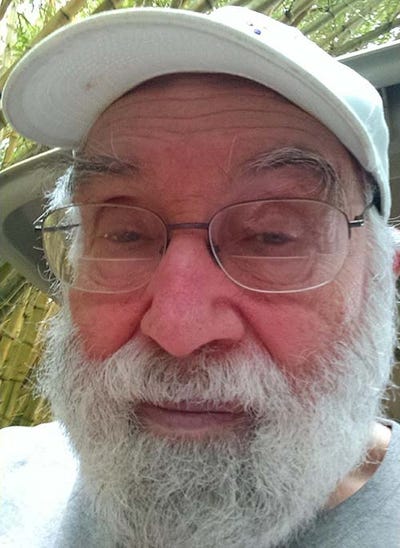Extrusion Basics: Toil and Trouble, and Plastics Processing
Allan Griff reprises the “10 (11) Key Principles” of extrusion as a pre-Hallowe’en treat.
October 16, 2021

Hallowe’en is still two weeks away, yet the stores are full of pumpkins, real and plastic, and other orange-and-blacks (Princeton colors). Here’s our chance to deal with death and still have fun. Or so it seems. I spent one Hallowe’en evening in a cemetery with dozens of serious spirit-seekers who were not there to have fun, and I’ll never forget it.
Connection to extrusion? In the illustration, plastic bristles on the broom and plastic tube for the broomstick. Also, plenty of orange color concentrate for the plastic pumpkins, which don’t spoil nor attract critters, and may be extrusion blown. And if you light up anything, there’s plastic insulation on the wires.
Deeper connection: People believe what they want to be true, and although this may help us deal with death, it also supports the common but erroneous belief in plastics’ toxicity.
Just as the real world must follow the imperfect but undeniable natural laws of chemistry and biology, extrusion has its own laws. Here is my “rulebook,” the "10 (11) Key Principles," adapted from my Extrusion Operating Manual, and presented at Informa Markets' Virtual Engineering Days last July.
A single screw usually turns counterclockwise as seen from the rear, unscrewing itself out the back, but the thrust bearing keeps it in place, while the opposing force pushes the plastic forward and out. Twins may turn in either or both directions, but the principle is the same
We need energy (heat) to soften the plastic enough to push it through and out. We then need to make the formed product solid again, by cooling with water, metal surface, and/or air.
Motor speed is usually much higher than screw speed, so we need reduction — gears, pulleys, or a combination. Know your motor and the reduction ratio to know limits to screw speed. Not all power is available at all speeds, which protects the system.
Most of the heat needed to soften the plastic comes from the motor to overcome the viscous friction in the barrel. That may limit screw speed, which, in turn, may control production rate. Exceptions are small extruders, some twin-screws, paper-coating, and some high-heat polymers.
Pellets must stick to the barrel wall and slip on the screw root, in a single-screw line, and also stick to each other, for highest in push (cc/turn).
Materials are the biggest component of manufacturing in almost all cases, often more than everything else put together. Use scrap and trim in ways that replace new purchases, and pay attention to thickness precision to get lowest aim without product failure.
Energy to extrude is a very small proportion of manufacturing cost. This seems counter-intuitive, because we all have quite valid energy-saving concerns, but do the numbers if you’re not sure. If the melt gets too hot it will not extrude to desired shape, or degrade, or both.
Measure and understand process data — head pressure (relates to screening, mixing, bearing life), melt temperature (where?), and motor current (amps).
Output rate is the displacement of the last flight (drag flow) minus head resistance (pressure demand) plus any overbite at the feed. Remember that output is melt, so melt density applies, and can be as much as 20% less than solid density.
Typical shear rates are 100 reciprocal seconds (rsec) in screw channels, 100 to 1000 in most die lips, and well above 1000 in flight-barrel clearances and tiny dies. Viscosity depends on this: Faster = lower, less resistance to flow. Relates to flow in dies, melt index testing.
Heating/cooling through the barrel is opposed by the motor. Heat lowers wall viscosity, so screw turns easier, less frictional, heat generated. Cooling Is the reverse.
Comments and questions, please write [email protected]. For Hallowe’en, if you’re an opera fan, listen/see the end of Mozart’s Don Giovanni, which has a ghost singing in a cemetery. And for All Saints Day, November 1, see my column on the "Patron Saints of Extrusion."

Allan Griff is a veteran extrusion engineer, starting out in tech service for a major resin supplier, and working on his own now for many years as a consultant, expert witness in law cases, and especially as an educator via webinars and seminars, both public and in-house, and now in his new audiovisual version. He wrote Plastics Extrusion Technology, the first practical extrusion book in the United States, as well as the Plastics Extrusion Operating Manual, updated almost every year, and available in Spanish and French as well as English. Find out more on his website, www.griffex.com, or e-mail him at [email protected].
No live seminars planned in the near future, or maybe ever, as his virtual audiovisual seminar is even better than live, says Griff. No travel, no waiting for live dates, same PowerPoint slides but with audio explanations and a written guide. Watch at your own pace; group attendance is offered for a single price, including the right to ask questions and get thorough answers by e-mail. Call 301/758-7788 or e-mail [email protected] for more info.
About the Author(s)
You May Also Like




